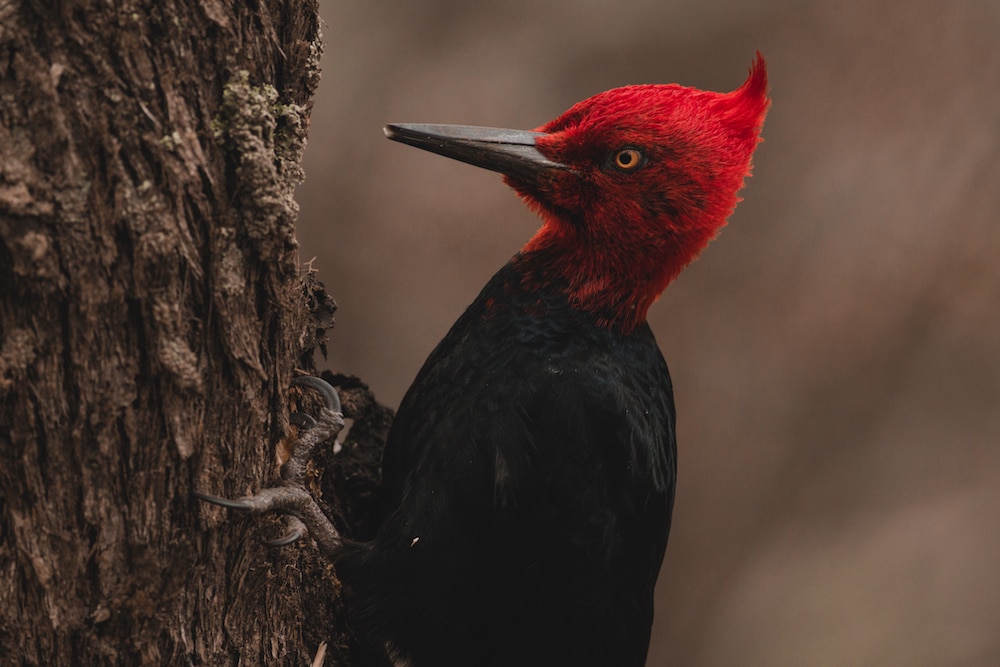Create a free profile to get unlimited access to exclusive videos, sweepstakes, and more!
To communicate, most birds sing, but woodpeckers play the drums
Every discussion is a headache.

In the early days of animation, the world was greeted by a new kind of celebrity: the animated anthropomorphic animal. Disney had Mickey Mouse, Warner Bros. had Bugs Bunny, and Universal had Woody Woodpecker.
Woody went on to star in countless animated shorts, several long-running series (now streaming on Peacock!), and even a live action movie. Throughout Woody’s decades-spanning antics, he’s communicated with all manner of people and animals, often with a trademark laugh which mimics the sound of real-world woodpeckers. Even Woody’s zany brand of dialogue is impressive, considering that during his heyday and until very recently it wasn’t believed that woodpeckers were even capable of anything resembling language.
That might have just changed, according to a new study by a team of researchers in the United States and Demark, published in the journal PLOS Biology. Scientists were interested in brain structures common among vocal learning birds. Prior to this study, vocal learning had been established in only three lineages of birds: songbirds, parrots, and hummingbirds. Each of them demonstrates the ability to learn vocalizations from their peers and utilize them for communication. They each also have trademark PV gene expression in the forebrain which relates to the learning and production of vocalizations. Similar structures and gene expression exist in humans as well. We use them for language.
It's worth noting that vocal non-learning animals aren’t silent. They often utilize vocalizations, but they lack the ability to modify those vocalizations based on new information or learn new vocalizations from peers. They’re basically selecting from a dropdown menu rather than writing their own script.
With the PV gene target identified, scientists looked at the brains of seven different bird lineages which were assumed to be vocal non-learning. In each case, their suspicions were confirmed. Again and again, they found that these birds lacked the necessary structures and gene expression for something like language. Then they got to woodpeckers and found a surprise.
Despite the observation that they don’t learn vocalizations, woodpecker brains have all of the right features for vocal learning. So, what gives? Scientists hypothesize that woodpeckers use the same language structures as other vocal learning birds, but for a different complex motor activity. Instead of communicating through vocal calls, woodpeckers do their talking by drumming their beaks. For woodpeckers, every conversation is like banging your head against a wall. Or a tree, as the case may be.
When a woodpecker inhabits a new area, it will send out a series of rapid percussive beats by tapping its beak against a tree. It’s a simple yet effective communication, letting any competitors nearby know where they are and that they have claimed that space. This threat display rises in complexity and tempo when competitors are around. In general, higher beats per minute is associated with a higher threat and sometimes woodpeckers will engage in drum battles for territory. Songbirds do something similar with their songs, woodpeckers are just using a different instrument.
Drum battles are only the tip of the woodpecker communication iceberg, though. Research suggests their signature drumbeats might encode even more information than just defending territory. The cadence can vary between species and may even vary by individual, allowing them to identify themselves, sort of like a name. The next time you hear the telltale sound of a woodpecker banging its face against a tree, it might be saying “I’m a northern flicker and my name is Steve.” We wonder if any of them are actually called Woody.


























